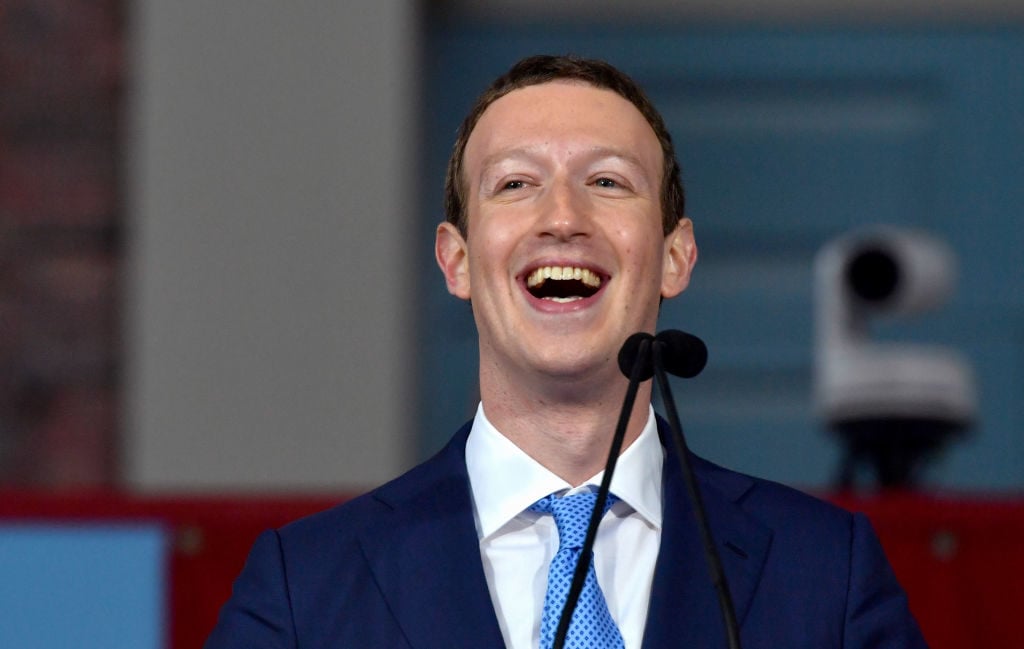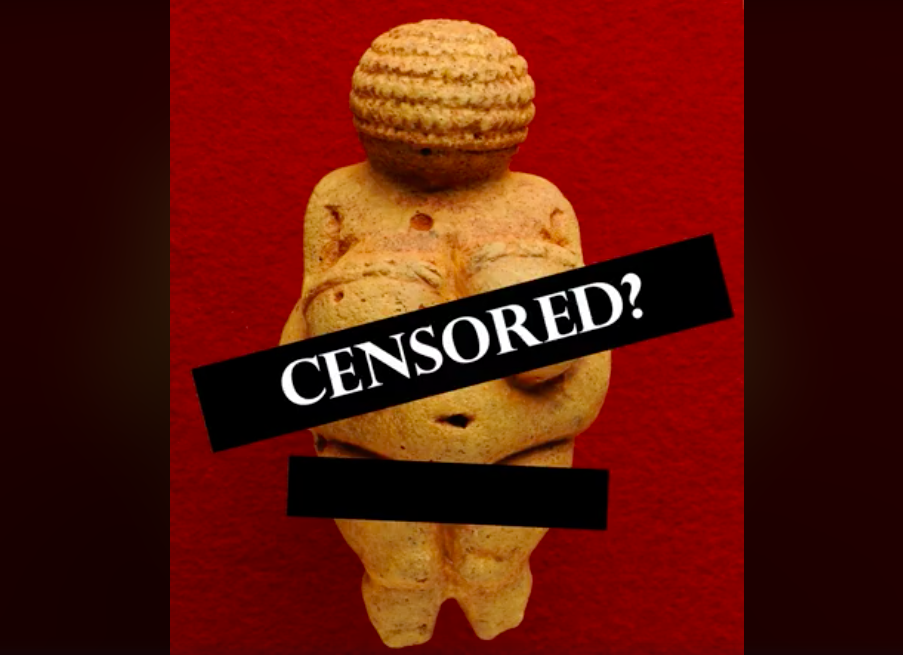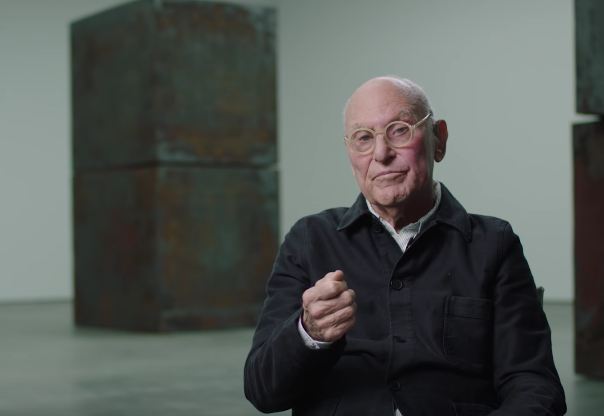Analysis
The Gray Market: Why Art Censorship Is Built Into Facebook’s DNA (and Other Insights)
Our columnist explains how conservatism powers Facebook's business plan, and addresses disappearing sculptures and fake Basquiats.

Our columnist explains how conservatism powers Facebook's business plan, and addresses disappearing sculptures and fake Basquiats.

Every Monday morning, artnet News brings you The Gray Market. The column decodes important stories from the previous week—and offers unparalleled insight into the inner workings of the art industry in the process.
This week, stories about appearances, disappearances, and what’s behind them…
On Tuesday, The Art Newspaper reported that, in late December, Facebook censored an Italian user’s personal post featuring an image of the Venus of Willendorf, one of art history’s oldest and best-known depictions of the nude female form. The petite limestone sculpture dates from the Paleolithic period and has been the defining work held by Vienna’s Naturhistorisches Museum since its discovery in the nearby town of Willendorf during a 1908 dig headed by the institution’s archaeologists.
The following day, the museum lashed out at Facebook by releasing an official statement that reads in part, “an archaeological object, especially such an iconic one, should not be banned from Facebook because of ‘nudity,’ as no artwork should be.”
By Thursday, a spokesperson for the social media titan apologized for the incident, saying that its community standards forbidding nudes contain “an exception for statues, which is why the post should have been approved.”
But pronouncing the case closed here would be more premature than saying “I love you” the first time your date laughs at one of your jokes.
As others have noted, the Venus of Willendorf joins a long lineup of legitimate artworks to be nixed by the House That Zuckerberg Built over the past few years. Facebook is currently in the midst of a lawsuit brought in French court by kindergarten teacher Frédéric Durand-Baïssas, who alleges that the platform wrongfully deleted his account in 2012 after he posted an image of Gustave Courbet’s The Origin of the World (1866).
A brief history of Facebook’s artistic censorship spats also includes the banning of Gerhard Richter’s blurred rendering of a nude descending a staircase, Evelyne Axell’s Pop art painting of a woman licking an ice cream cone, and Danish Modernist Edvard Eriksen’s beloved, more than 100-year-old public sculpture The Little Mermaid.
In fairness to Facebook, some of those overreaches occurred when its content policies were as vague as a half-assed police sketch. The platform has revised its guidelines countless times over the years in response to various snafus and crises. Here’s the text in Facebook’s community standards on nudity relevant to artwork censorship as of March 2, 2018:
We also allow photographs of paintings, sculptures, and other art that depicts nude figures. Restrictions on the display of sexual activity also apply to digitally created content unless the content is posted for educational, humorous, or satirical purposes. Explicit images of sexual intercourse are prohibited. Descriptions of sexual acts that go into vivid detail may also be removed.
So then why did the Venus of Willendorf run afoul of the Hackers of Menlo Park?

The Venus of Willendorf, courtesy of @Naturhistorisches.Museum.Wien via Facebook.
Both machines and humans are to blame. Much of Facebook’s content review process is carried out by algorithms, as anyone who has followed the ongoing “fake news” junkyard fire knows. Here’s a relevant nudity-based excerpt from The Four, Scott Galloway’s book on the quartet of tech giants now aggressively reshaping our lives:
“A digital space needs rules. Facebook already has rules—it famously deleted the iconic image from the Vietnam War of a naked girl running away from her burning village. It also deleted a post by the Norwegian prime minster critical of Facebook’s actions. A human editor would have recognized the image as the iconic war photo. The AI did not.”
But human reviewers do get involved when users flag posts as offensive or abusive. It’s just that the job can be brutally hard, and these flesh-and-blood judges are fallible.
For example, in December 2017—incidentally, the same month Facebook banned the Italian user’s Venus of Willendorf post—the nonprofit news organization ProPublica presented Facebook with 49 posts containing possible hate speech, along with their moderators’ actual rulings on each. The platform acknowledged that its content review team “made the wrong call” on 22 of them.
That’s a success rate of just 55 percent. Which is unbelievably great if you’re talking about shooting three-pointers in professional basketball, unforgivable if you’re talking about sufficiently cooking chicken in a restaurant, and probably not much better if you’re talking about blocking bigots on the world’s largest social media platform.
The crucial point is that both sides of Facebook’s content review equation are obedient vassals to the same god as those sad men dialing into late-night infomercials to buy bogus penis-enlargement pills: growth.
When Galloway’s aforementioned book went to press, he wrote that one in six people on the planet logged onto Facebook every day. And yet that still means Facebook is only one-sixth of the way toward Zuckerberg’s stated goal of “connecting the world.”
Obviously, the biggest untapped market is China. The People’s Republic rejected the platform back in 2009. Since then, it has so dramatically escalated censorship under president Xi Jinping—who, by the way, just this week eliminated all impediments to ruling for life—that it has banned online content featuring Winnie the Pooh and (temporarily) the English letter “n.”
Ominously, Facebook’s ongoing multi-tiered “charm campaign” to re-enter China even included testing a controversial product that would give a third party the ability to censor posts before they go live. (All evidence suggests that Facebook eventually scrapped the project.)
But Facebook has shown itself willing to block accounts and content based on the whims of states where it already has access, too. As Glenn Greenwald wrote based on the platform’s responsiveness to requests made by US and Israeli officials, “Facebook will submit to and obey the censorship demands of governments and officials who actually wield power over it, while ignoring those who do not.”
Remember, if the whole of humanity were a solar system, the art world would be, at best, the size of Pluto, if not some random asteroid roped into orbiting a moon. If you’re Facebook, who cares about occasionally having to apologize to a random Italian arts activist, piss off an Austrian national history museum, or (worst case) pay less than $25,000 in damages to a French kindergarten teacher for being slightly too prudish?
Facebook’s priorities lie elsewhere. And if it’s going to err on the issue of censorship, the incentives say that it should err on the side of chastity—even if the platform looks ridiculous for a few days every once in a while. After all, it can quickly reverse itself any time common sense dictates.
At least, it can until access to a massive new audience might depend on keeping the shroud in place. And the ripple effects of that possibility are much, much bigger than one paperweight-sized stone nude from 30,000 years ago.

Richard Serra. Courtesy of YouTube.
Over the weekend, Allison McNearney walked us through an unsolved art-world mystery: the unexplained disappearance of a 38-ton Richard Serra sculpture from a Spanish art storage facility. And while the vanishing act no doubt seems baffling to many readers, I’m confident that anyone with years of experience in art logistics is far less stunned.
First, the backstory. Commissioned at a cost of $220,000 for an exhibition at the Reina Sofía in 1986, Serra’s Equal-Parallel/Guernica-Bengasi spent four years on view in a dedicated gallery inside the museum before being transferred to a Madrid specialty warehouse in 1990 for (ahem) safekeeping. Then, 15 years later, a review of the museum’s inventory revealed that the piece had vanished without a trace. (Cue the smoke monster bellow from Lost.)
Unbeknownst to the museum, whose administrators later could not prove that they had made any storage payments after 1992, the facility went into receivership in 1998—a fact that prompted Spanish newspaper ABC to suggest “the work may have been sold as scrap or melted down by somebody who did not realize its artistic value,” per the Guardian’s Giles Tremlett.
Sounds crazy, right?
Well, consider these nuggets from my gallery days. I once set up a consignment of a few paintings to another highly reputable gallery. None of the works was smaller than seven by seven feet or priced lower than the mid-six figures. All of them were supposed to be collected from a respectable art storage facility by the consignee’s shipper. TWO MONTHS after the pickup, we got a call from the warehouse asking what we wanted to do about “the one [redacted] didn’t want.” Turns out that the consignee decided one of the pieces was too big, so they just left it in storage… and apparently neither the consignee nor the warehouse thought we might want to know this immediately.
Or how about the time a storage facility delivered an entire trailer full of works to a friend of a friend’s gallery, only for them to discover halfway through unloading that LITERALLY NOTHING on the truck belonged to the would-be recipient? Even better, what if I told you that the shippers asked to just leave the unloaded work at the gallery until they had time to go back to the warehouse and “figure it out”?
Look, I’ve crawled through labyrinths of crates on both sides of the issue—searching for works that disappeared for months and trying to un-John Doe mysterious works that collectors and galleries have stored for years. It’s a mess in every sense of the word, and it’s not always the storage facilities’ fault. But if you think a 38-ton Serra sculpture is too big to disappear, remember that in many warehouses, galleries, and even museums, day-to-day operations look less like a multibillion-dollar business and more like a hidden-camera prank show.

Jean-Michel Basquiat. © Edo Bertoglio. Courtesy of Maripol. Artwork: © The Estate of Jean-Michel Basquiat. Licensed by Artestar, New York.
Finally this week: On Wednesday, art authenticator Richard Polsky unveiled five ways to tell that works purported to be by Jean-Michel Basquiat are, in fact, faker than the paintbrush-length eyelashes on a Vegas drag queen. And in my view, the quintet’s conclusion also powerfully illuminates the gap between artworks as resellable objects and artworks as a true “asset class” by the phrase’s strict, securitizable definition.
Polsky’s final tip about fraudulent Basquiats is this: “They often come with an amazing backstory.” Usually, Polsky writes, the narrative involves the owner acquiring the work from the artist himself, either in direct exchange for drugs or so that a desperate Basquiat would have enough money to cop heroin. In any event, surprise! No paper trail exists for the piece(s) in question.
I won’t say that success in the three traditional asset classes—stocks, bonds, and cash—never comes with a wild story. Just remember David Choe, the street artist who made hundreds of millions of dollars by painting murals inside Facebook’s first offices in exchange for shares, not cash. The mythological potential gets a little juicier once you branch into alternative (but still securitizable) asset classes like commodities and real estate, too.
However, I think it’s fair to say that, most of the time, good long-term investments are boring—so boring that hearing about them in depth qualifies as the conversational equivalent of Chinese water torture. In fact, this is a huge part of the reason why many Wall Street high-rollers try to get in on the wild West of the art world. Their professional lives are not cool! No one wants to hear about how diversified their portfolios are. They mostly become “interesting” through the shit they buy!
I would never declare that the art market would be more compelling if it were more professional, more systemized, or more regulated. But if those descriptions applied, I would be a lot more comfortable at least entertaining the idea of artwork as a truly investable “asset class,” instead of just a type of item that you can buy low and (if you’re smart, lucky, or both) sell high. Polsky’s shrewd lesson about tall tales and bogus Basquiats is a great reminder that, for better and/or worse, that more secure future still has yet to materialize—and perhaps never will.
That’s all for this week. ‘Til next time, keep your eyes on the prize, or it might be gone by the time you look again.